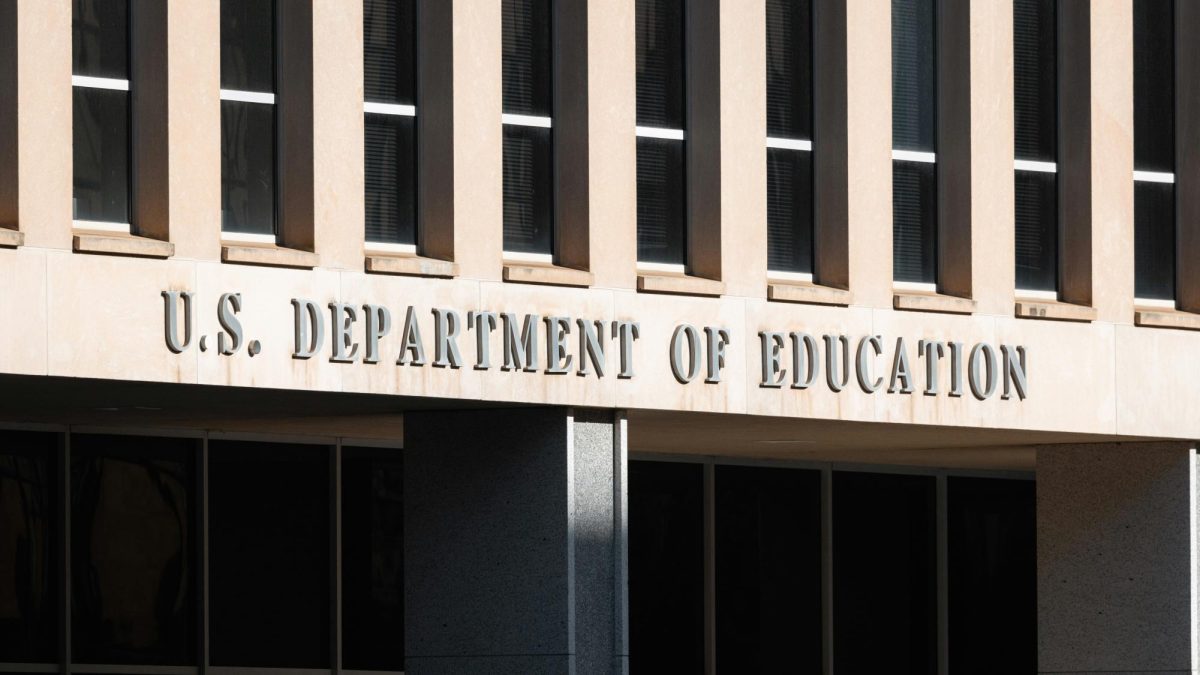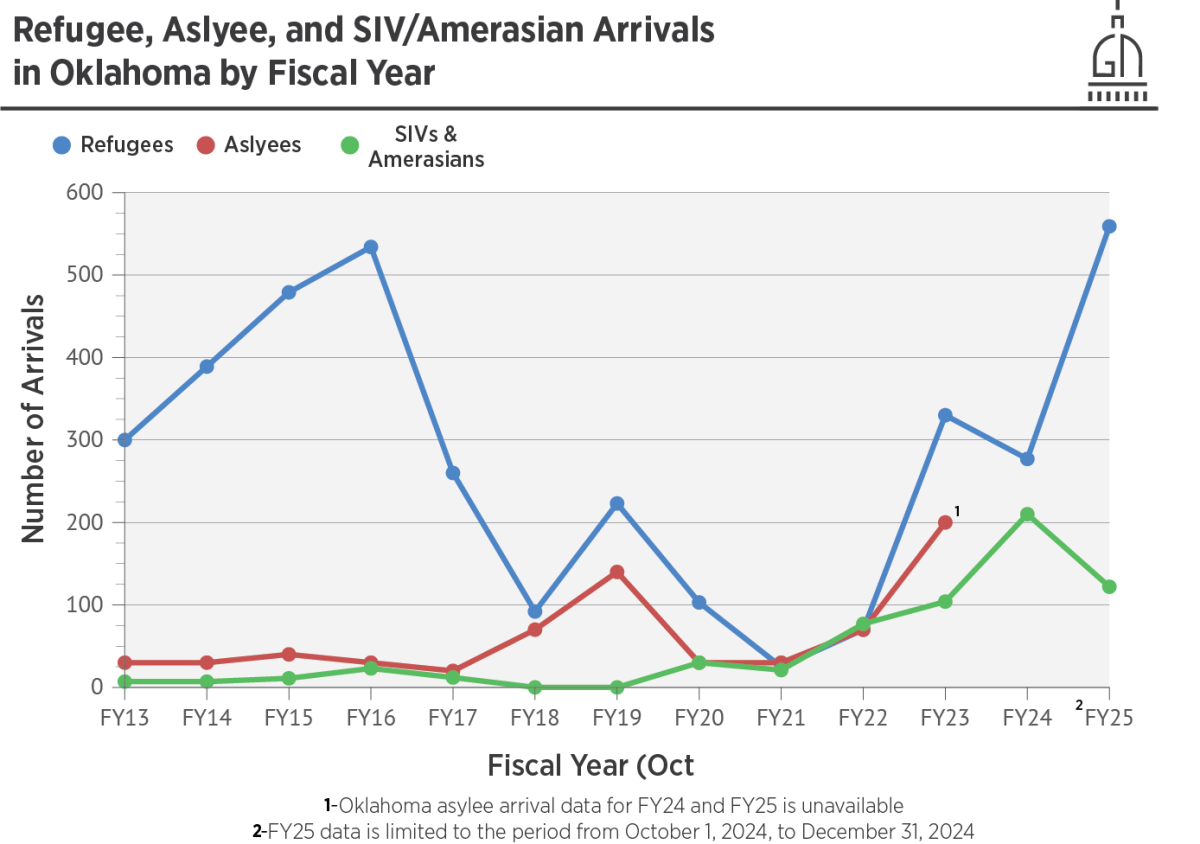WASHINGTON — The “One Big Beautiful Bill,” backed by President Donald Trump and House Republicans, would restructure Pell Grants and end subsidized loans, reducing aid for many Oklahoma college students.
The legislation, which the Senate will take up this week, would raise credit-hour requirements for Pell Grants, reducing aid and cutting eligibility for some part-time students beginning in 2026.
But a parallel budget proposal for the U.S. Department of Education unveiled last Friday slashes the Pell Grant program even further by cutting the maximum award to $5,710 per year from the current $7,395 award, potentially putting college out of reach for many.
“It’s going to be a huge loss financially for my students,” said one academic counseling professional at the University of Oklahoma. “At the end of the day, with rising tuition and fees, students need every cent they can get from outside resources that they are not going to have to pay back later in life.”
Students attending the 12 Oklahoma community colleges are even more likely to be affected by the bill and budget proposals because they often are balancing coursework with jobs and financial responsibilities. Roughly 18% of Oklahoma’s community college students were both part-time and receiving Pell Grants in 2023-24, the highest share of any institution type in the state.
Chilua Hughes, a part-time student at Oklahoma City Community College and a mother of a 13-month-old child, received, on average, $3,000 in Pell Grant aid a year. As a mother and a student, managing time and finances is essential for her, making the ability to take fewer classes while receiving a Federal Pell Grant critical. Hughes said the proposed changes would disrupt that balance, as she relies on the aid.
“I would not be able to afford college without it,” said Hughes. “It has paid the overwhelming majority of my college tuition.”
During the 2023-24 school year, nearly 22,000 part-time Oklahoma students — those enrolled in fewer than 12 credit hours per semester — received Pell Grants, a federal need-based award that helps low-income students pay for college, according to data from the Oklahoma State Regents for Higher Education.
Hughes said increasing her enrollment classes to meet new credit-hour requirements is not feasible because of her child. If her aid is reduced, she said she may have to drop classes, but doing so would lower her award amount further, and drop her close to the proposed minimum credit requirement.
“I’m kind of at a juxtaposition where I can only really get my associate’s degree, because I will not be able to afford to get my bachelor’s with all the proposed cuts,” said Hughes. “I don’t mind getting an alternative career, but those just don’t play into things that I want to do.”
The “Big Beautiful Bill” reduces funding primarily by raising the full-time credit-hour requirement for the Pell Grant from 12 to 15 per semester. Because Pell Grants are prorated based on the hours enrolled, a student taking 12 credit hours—80% of the new 15-hour full-time standard—would receive 80% of the full award if the bill takes effect.
Additionally, the bill requires at least half-time enrollment, or 15 credit hours per semester, for college students to be Pell Grant eligible. As it stands, part-time students — regardless of their course load — receive a prorated amount as long as they are enrolled in a degree program.
A Congressional Budget Office (CBO) report estimates that more than half of the nearly 7 million student recipients nationwide would receive reductions to their Pell Grants, and 10% would lose eligibility for the aid program. According to the Department of Education, 93% of Pell recipients come from families with incomes of less than $60,000; two-thirds earn less than $30,000.
“A lot of my students who receive Pell Grants, and I’m not trying to paint a broad picture, are usually crucial in supporting their families as well,” said the OU academic counselor. “The changes would be prohibitive in their academic success, especially if they are having to work outside of their academic program.”
In a letter to House GOP leaders on May 21, Ted Mitchell, president of the American Council on Education, wrote the bill would have “a historic and negative impact on the ability of current and future students to access postsecondary education, as well as on colleges and universities striving to carry out their vital educational and research missions.”
Republican supporters argue the new measures would incentivize students to graduate faster, while Democrats contend they would harm part-time students who are balancing work, family, and other responsibilities. The CBO expects that one-third of those set to lose eligibility would increase enrollment to meet new requirements.
The bill includes additional changes to eliminate Graduate PLUS loans, cap Parent PLUS borrowing for undergrads, and impose new lifetime borrowing limits for students. It also aims to hold universities accountable by taxing colleges with large endowments and imposing “risk-sharing” penalties tied to unpaid student loan debt.
While no Oklahoma university would be taxed under the endowment provision, schools could still face financial penalties if graduates struggle to repay federal loans.
The House Committee on Education and Workforce, which drafted the bill’s education provisions, said in a blog post that its portion aims to “simplify” and “streamline” student loan options and repayment while establishing “accountability for students and taxpayers.”
The Congressional Budget Office estimates this portion of the bill would save almost $350 billion over the next decade, adding to the proposed $1.3 trillion in spending cuts. However, a separate CBO report projects that the bill’s tax measures would add $2.4 trillion to the deficit over the same period.
“It’s time we stopped asking a factory worker in Michigan or a rancher in Texas to subsidize the student debt of a lawyer in Manhattan so colleges can continue to spike their tuition to whatever they want,” said Rep. Tim Walberg (R-MI), chair of the House Committee on Education and the Workforce. “By capping loan amounts and giving some financial responsibility to schools, this legislation addresses the root cause of high college costs and provides schools an incentive to deliver real value for students and taxpayers.”
House Democrats have sharply criticized these provisions, arguing they would gut financial aid programs, burden low-income students, and undermine college access for working families.
“This bill would force student borrowers into unaffordable repayment plans,” said Rep. Bobby Scott (D-VA), Ranking Member of the House Education and Workforce Committee. “Rather than streamlining the path to repayment, this bill would require students to pay more and be in repayment longer.”
Armando Gonzalez, a rising sophomore at the University of Oklahoma, worked a part-time job while taking 12 credits last fall and 14 during the spring, both considered full-time under OU’s current policy. He received the maximum Pell Grant of $7,395 for the full 2024-25 school year, covering less than half of an OU student’s tuition and fees. Under the bill’s proposed changes, he would have received $986 less in financial aid. If President Trump’s budget proposal is also enacted, he could lose even more.
Gonzalez said he saved money in high school to help cover costs, but the proposed changes still worry him.
“I was just given so many opportunities to come to OU in the first place,” said Gonzalez. “Depending on how much money I’ll be having to pay each year, I’ll probably just have to transfer to a lower-cost college.”
Gaylord News is a reporting project of the University of Oklahoma Gaylord College of Journalism and Mass Communication. For more stories by Gaylord News go to GaylordNews.net.














